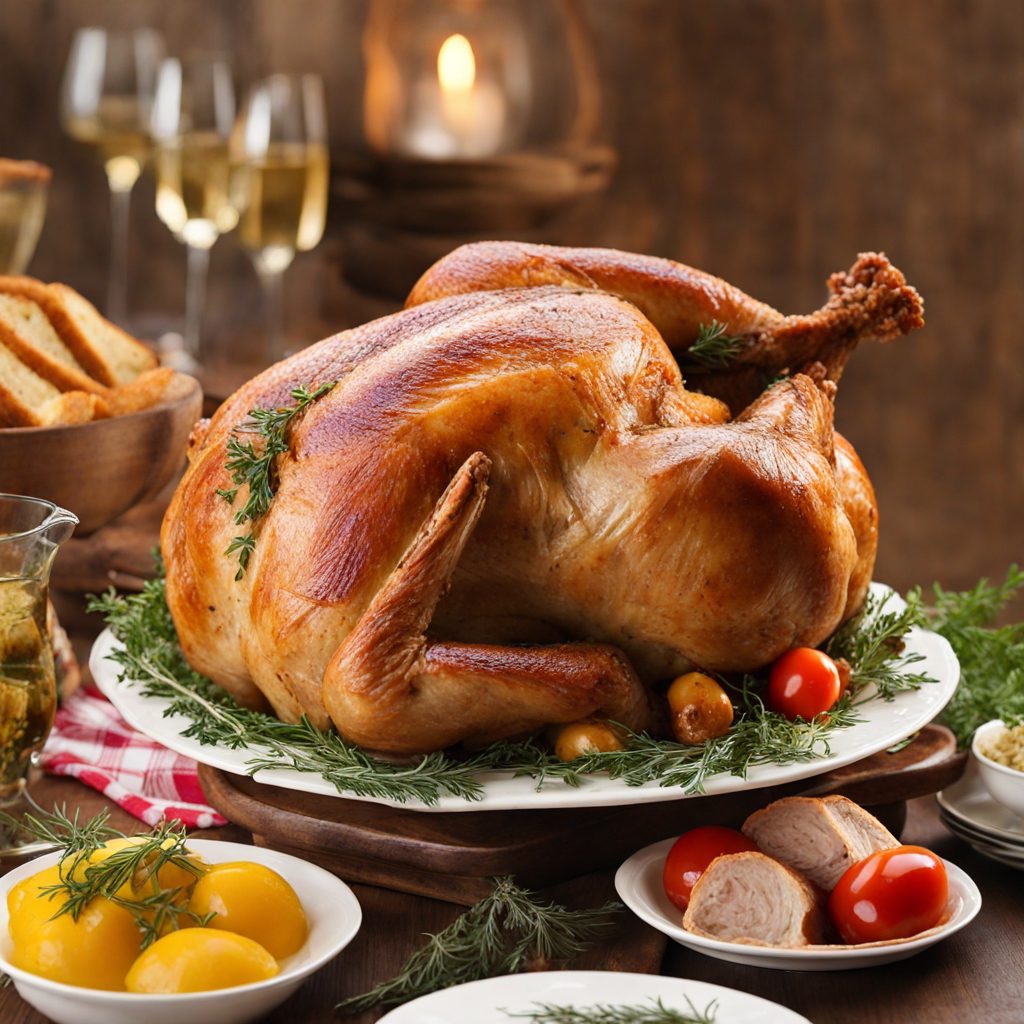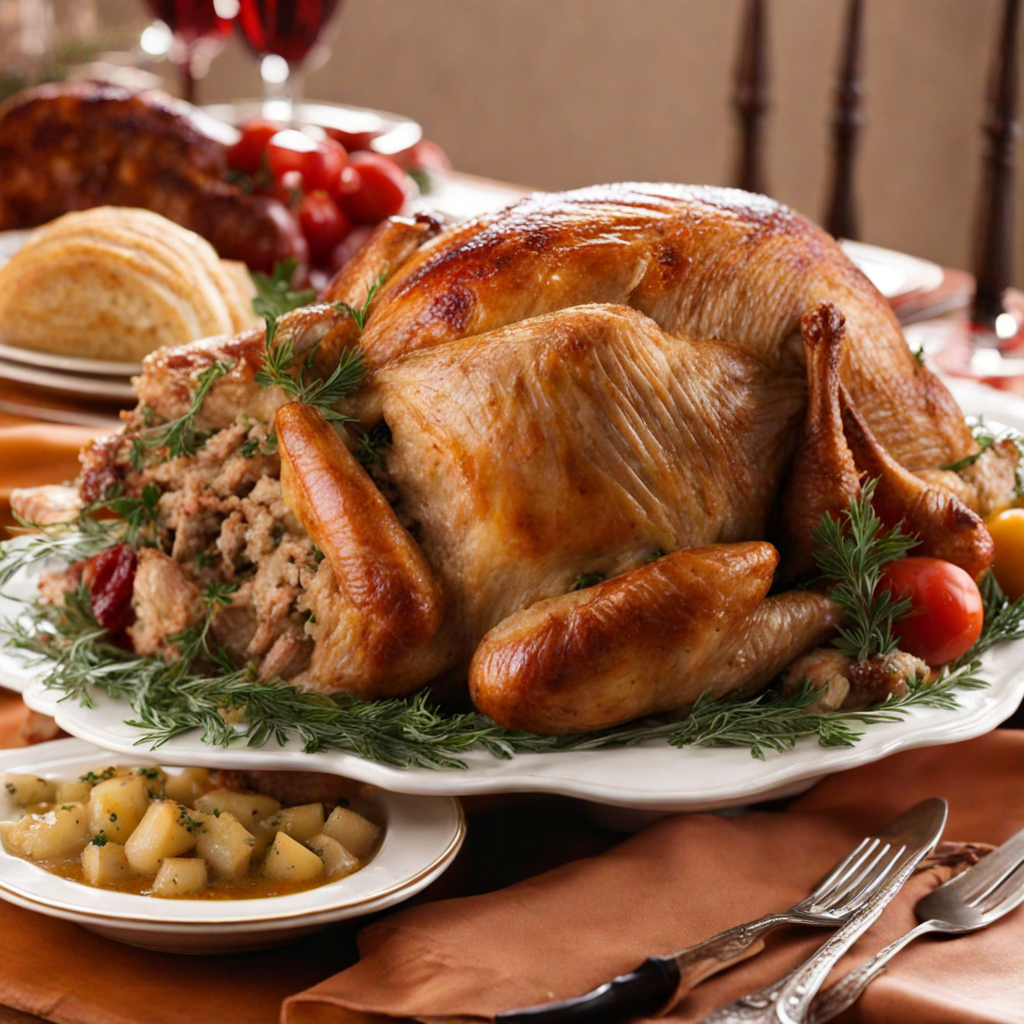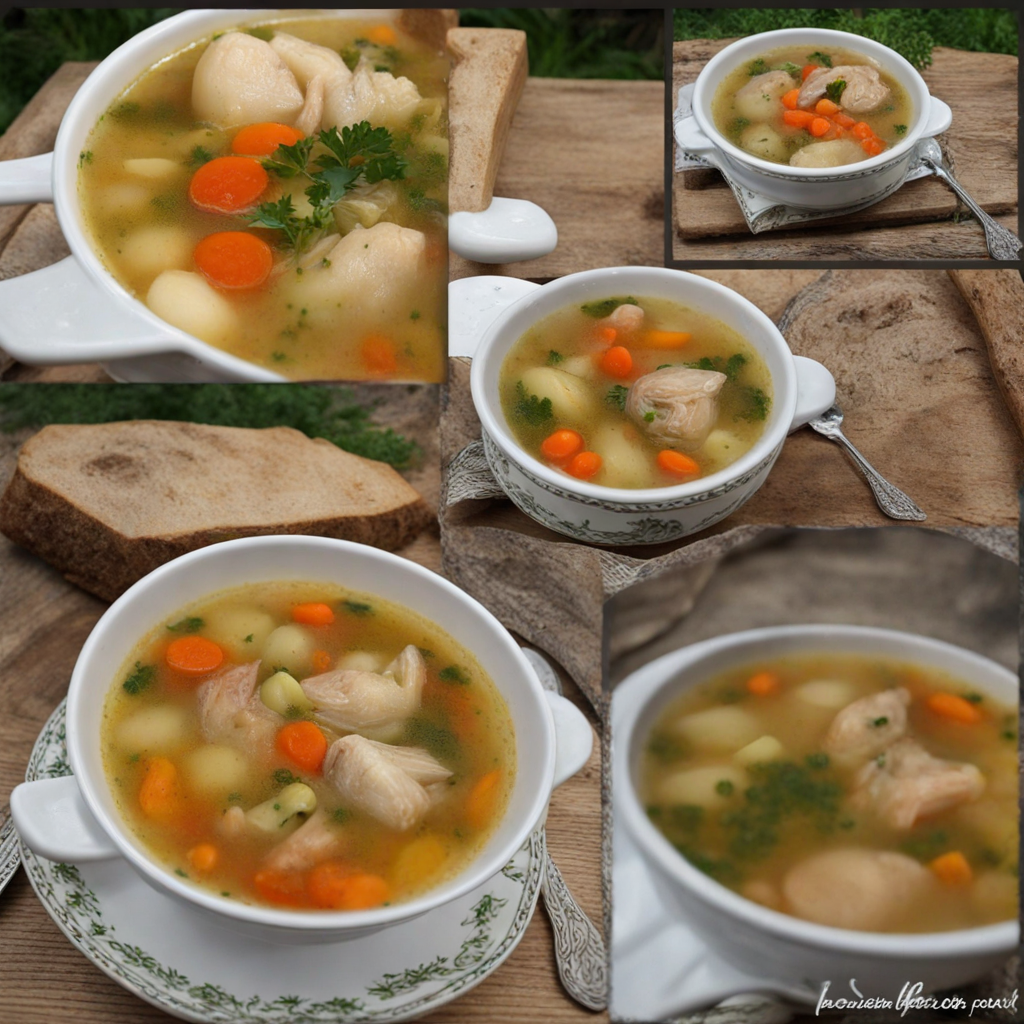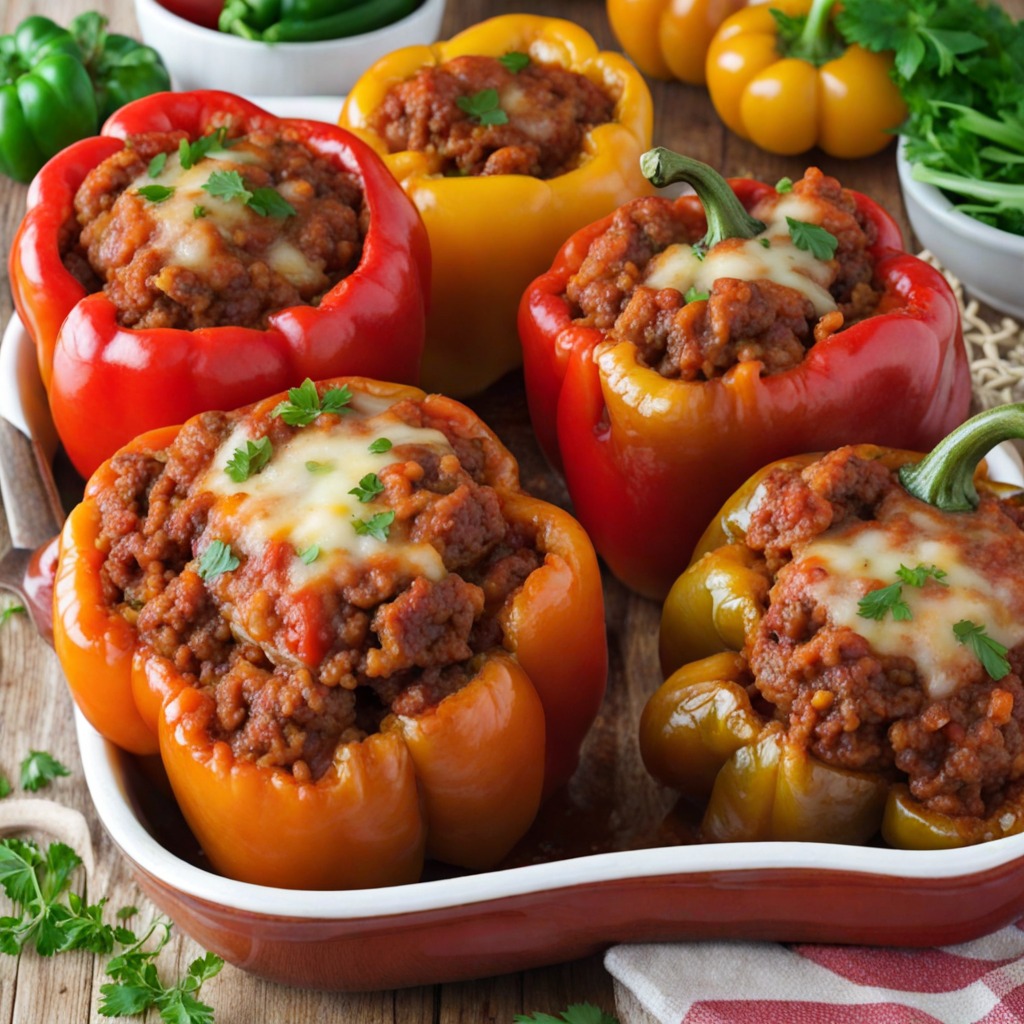Stuffed Turkey
Stuffed Turkey, or "Curcan umplut," is a traditional Romanian dish that showcases the country's rich culinary heritage. This dish features a whole turkey that is meticulously prepared and filled with a flavorful mixture that often includes a blend of rice, vegetables, and aromatic herbs. The stuffing can vary by region and family tradition, with common ingredients such as mushrooms, onions, and spices that bring warmth and depth to the dish. The turkey is then roasted to perfection, allowing the skin to crisp up beautifully while retaining the juicy, tender meat inside, making each bite a delightful experience. The preparation of Stuffed Turkey is not just a cooking process; it's a celebration of togetherness, often served during festive occasions such as Christmas or family gatherings. The aroma of the roasting turkey fills the air, enticing everyone around the table and creating an atmosphere of anticipation. As the turkey is carved, the stuffing spills out, showcasing the vibrant colors and textures that make this dish visually appealing as well. The combination of the savory stuffing and the succulent turkey meat creates a harmonious balance of flavors that is both comforting and indulgent. Accompanying the Stuffed Turkey, you may find traditional Romanian sides such as creamy polenta, pickled vegetables, or a fresh salad, which complement the richness of the main dish. The meal is often rounded out with a glass of local wine or a traditional spirit, enhancing the overall dining experience. For anyone looking to explore new tastes, Stuffed Turkey offers a delightful journey into Romanian cuisine, filled with heartwarming flavors and a sense of cultural appreciation.
How It Became This Dish
Curcan Umplut: A Culinary Journey Through Romanian Tradition #### Origins Curcan umplut, or stuffed turkey, is a traditional dish deeply rooted in Romanian culinary heritage. While turkey is not native to Europe and was introduced from the Americas in the 16th century, it quickly became integrated into various European cuisines, including that of Romania. The earliest records of domestic turkey farming in Romania date back to the 17th century, coinciding with the bird's introduction to the continent. The dish's name, "curcan umplut," directly translates to "stuffed turkey," signifying not just the use of turkey but the importance of stuffing as a culinary technique in Romanian kitchens. The stuffing, or “umplutură,” is typically made from a mixture of bread, rice, herbs, and sometimes minced meat, reflecting the agricultural bounty of the Romanian countryside. #### Cultural Significance In Romania, curcan umplut is more than just a meal; it is a symbol of celebration, family gatherings, and hospitality. It is often served during significant occasions such as Christmas, Easter, and weddings, reflecting the dish's association with festivity and abundance. The preparation of curcan umplut is a communal activity, often involving multiple family members who gather to prepare the turkey and its stuffing, enhancing the sense of togetherness that is central to Romanian culture. The dish also embodies the Romanian ethos of utilizing local ingredients and seasonal produce. With an emphasis on fresh herbs, vegetables, and grains, curcan umplut is a celebration of the land's offerings. The stuffing often includes regional ingredients such as mushrooms, nuts, and dried fruits, which add depth of flavor and texture, showcasing the diversity of Romanian agriculture. #### Development Over Time As Romania evolved through various historical periods, so did its culinary practices. The Ottoman Empire's influence in the 18th and 19th centuries introduced new spices and cooking methods that enriched the traditional Romanian fare. Ingredients such as rice and various spices found their way into the stuffing of curcan umplut, reflecting the fusion of cultures and cuisines. In the 20th century, especially during the communist regime, food scarcity led to changes in the way curcan umplut was prepared. Families often had to adapt their recipes based on availability, sometimes substituting turkey with chicken or using less expensive filling ingredients. However, even in times of scarcity, the dish remained a staple during special occasions, underscoring its resilience in Romanian culture. After the fall of communism in 1989, the culinary landscape in Romania began to flourish once more. As the country opened up to global influences, traditional dishes like curcan umplut re-emerged with renewed vigor. Chefs and home cooks alike began experimenting with the dish, incorporating international flavors and techniques while still honoring its historical roots. #### Modern Interpretations Today, curcan umplut can be found in a variety of forms across Romania, reflecting local tastes and seasonal ingredients. In urban areas, gourmet versions of the dish might include sophisticated stuffing mixtures with quinoa or wild rice, infused with exotic spices and herbs. Meanwhile, rural kitchens continue to celebrate the traditional preparation methods, using locally sourced ingredients and age-old recipes passed down through generations. Moreover, the resurgence of interest in traditional Romanian cuisine has led to curcan umplut being featured in culinary festivals, cooking classes, and restaurants that focus on authentic Romanian dishes. This renewed interest has allowed younger generations to connect with their culinary heritage while also embracing modern cooking trends. #### Conclusion Curcan umplut is more than just a dish; it is a narrative woven into the fabric of Romanian culture. From its humble beginnings as a newly introduced bird from the Americas to its status as a beloved symbol of celebration and family, the evolution of curcan umplut mirrors the resilience and adaptability of Romanian society. As Romania continues to navigate its identity in the modern world, curcan umplut remains a steadfast reminder of the importance of tradition, community, and the joy of sharing a meal with loved ones. Whether served at a festive gathering or a cozy family dinner, this dish encapsulates the warmth of Romanian hospitality and the richness of its culinary history. It serves as a delicious bridge between past and present, inviting all to partake in the flavors and stories of Romania's vibrant food culture.
You may like
Discover local flavors from Romania







